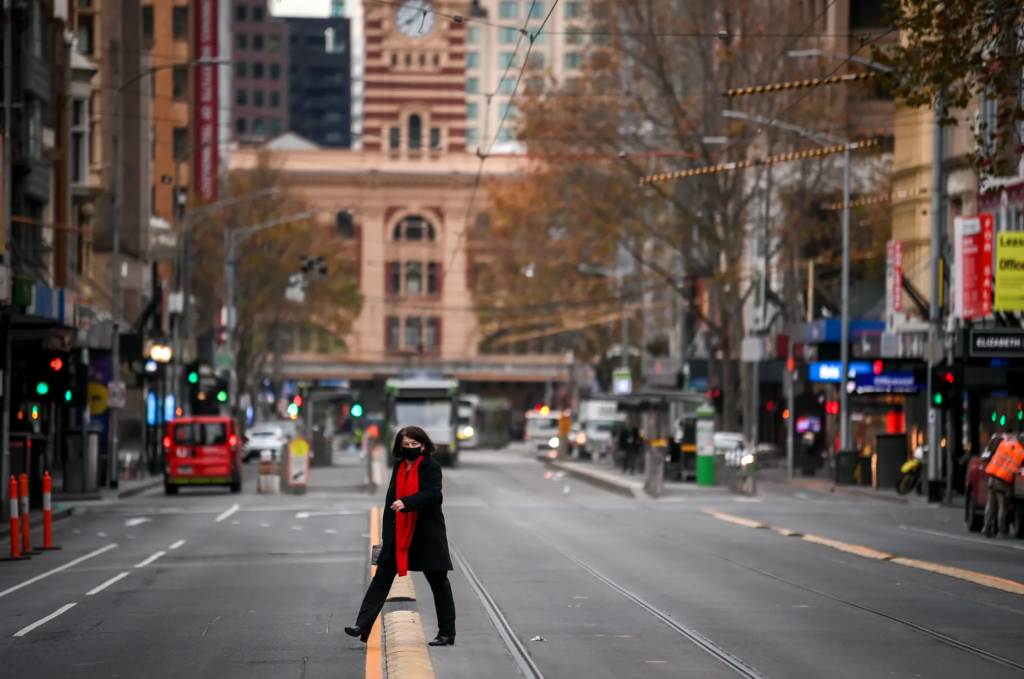Offices are empty across Melbourne’s CBD, with demand for space falling below that of the 1990s recession and slumping to the lowest in the country.
More than one-10th of the city’s office floor space was untenanted in July – the highest vacancy rate since January 2000 – as the effects of Melbourne’s five lockdowns hit business confidence and workers’ desire to return to their offices.
The Property Council of Australia’s Office Market Report, released on Thursday, showed the St Kilda Road precinct had Melbourne’s highest vacancy rate (16.3 per cent) followed by Southbank (15.2 per cent).
A survey of Australia’s top 50 companies, conducted by The Age and The Sydney Morning Herald last month, revealed that no surveyed company expected staff to come back into the office five days a week. Just six companies intended to set a number of office hours staff must work each week.
The report found the increase in Melbourne vacancy rates was largely due to reduced demand, rather than oversupply.
In the six months to July, tenants handed back space to landlords contributing to a negative “net absorption” rate – where more supply of available space outstrips demand – of 96,635 square metres of office space in the CBD.
Melbourne was the only capital city to record negative demand for office space.
There is also a looming glut of office and retail developments set for completion between now and 2023 in Melbourne’s CBD.
Almost 400,000 square metres of new office space will be completed in the next two years, with about 220,000 square metres set to open this year. This represents more than half of the office space supply to be added to Australia’s CBDs over the next six months.
The largest of these is 395 Bourke Street, which will add another 66,000 square metres – fully leased by NAB – to Melbourne’s tower stock. Another development at 750 Collins Street will release almost 39,000 square metres of fresh office space.
In July last year, NAB announced it would indefinitely mothball two major Docklands office towers at 700 Bourke Street and 800 Bourke Street, which housed a large proportion of NAB’s 34,000-strong workforce. While workers returned to 700 Bourke Street at the beginning of the year, the bank will consolidate its three major office towers as more staff adopt a flexible working model and 800 Bourke Street is tenanted to financial group MLC.
In May NAB chief operating officer Les Matheson said most staff believed they worked more productively from home.
“Within a matter of weeks [in March 2020], we were able to mobilise 85 per cent of colleagues to work remotely – many who’d never done so before – including our call centre teams,” he said.
“They showed incredible resilience and ingenuity, without compromising on productivity. In fact, more than 83 per cent of colleagues felt their productivity had improved during the pandemic.
“As our buildings have reopened, the majority are transitioning to a hybrid model of working, with time split between the office and home.”
Danni Hunter, executive director of the Property Council of Australia’s Victorian division, said the trends underscored the challenges of revitalising the CBD.
“Every lockdown is a step backwards for Melbourne and particularly our CBD and there is residual uncertainty about the future, with more supply coming online over the next six months,” she said.
“With only 26 per cent of office workers returning to the office before our most recent lockdown, and no plan to encourage people back as soon as the health advice allows them to return, the Victorian government has some serious heavy lifting to do in the interest of the survival of Melbourne businesses large and small.”
Melbourne lord mayor Sally Capp said she hoped the requirement to wear masks inside offices would be removed soon.
“We know from city businesses that this is a major deterrent to workers returning,” she said.
“We’re doing everything we can to encourage more people into the city, but the only way to keep Melbourne open and fill our offices is to vaccinate as many people as possible.”
Currently, up to 25 per cent of workers are permitted to return to offices in Victoria, subject to density and distancing requirements.
Melbourne also recorded a significant increase in its sublease vacancy rate in the CBD, almost doubling to nearly 120,000 square metres in the six months to July – almost double the rate in Sydney.
“The cycle of lockdowns has clearly shocked business confidence and seen the rapid rise of subleasing vacancies as people stay away from the CBD and small business and retail suffers,” Ms Hunter said. She urged the Andrews government to outline a plan to attract national and international organisations to headquarter in the CBD and Greater Melbourne.
